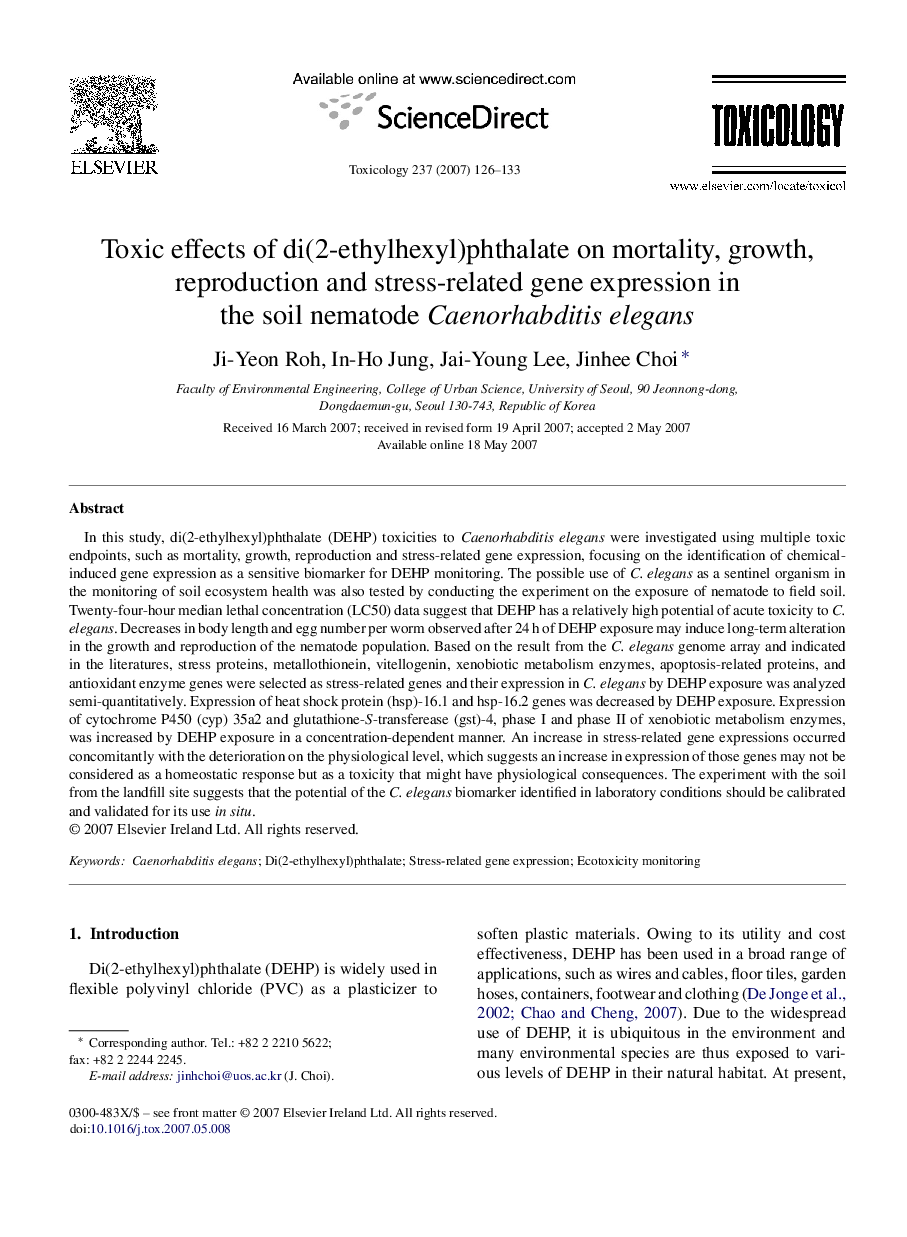| کد مقاله | کد نشریه | سال انتشار | مقاله انگلیسی | نسخه تمام متن |
|---|---|---|---|---|
| 2597749 | 1562419 | 2007 | 8 صفحه PDF | دانلود رایگان |

In this study, di(2-ethylhexyl)phthalate (DEHP) toxicities to Caenorhabditis elegans were investigated using multiple toxic endpoints, such as mortality, growth, reproduction and stress-related gene expression, focusing on the identification of chemical-induced gene expression as a sensitive biomarker for DEHP monitoring. The possible use of C. elegans as a sentinel organism in the monitoring of soil ecosystem health was also tested by conducting the experiment on the exposure of nematode to field soil. Twenty-four-hour median lethal concentration (LC50) data suggest that DEHP has a relatively high potential of acute toxicity to C. elegans. Decreases in body length and egg number per worm observed after 24 h of DEHP exposure may induce long-term alteration in the growth and reproduction of the nematode population. Based on the result from the C. elegans genome array and indicated in the literatures, stress proteins, metallothionein, vitellogenin, xenobiotic metabolism enzymes, apoptosis-related proteins, and antioxidant enzyme genes were selected as stress-related genes and their expression in C. elegans by DEHP exposure was analyzed semi-quantitatively. Expression of heat shock protein (hsp)-16.1 and hsp-16.2 genes was decreased by DEHP exposure. Expression of cytochrome P450 (cyp) 35a2 and glutathione-S-transferease (gst)-4, phase I and phase II of xenobiotic metabolism enzymes, was increased by DEHP exposure in a concentration-dependent manner. An increase in stress-related gene expressions occurred concomitantly with the deterioration on the physiological level, which suggests an increase in expression of those genes may not be considered as a homeostatic response but as a toxicity that might have physiological consequences. The experiment with the soil from the landfill site suggests that the potential of the C. elegans biomarker identified in laboratory conditions should be calibrated and validated for its use in situ.
Journal: Toxicology - Volume 237, Issues 1–3, 31 July 2007, Pages 126–133